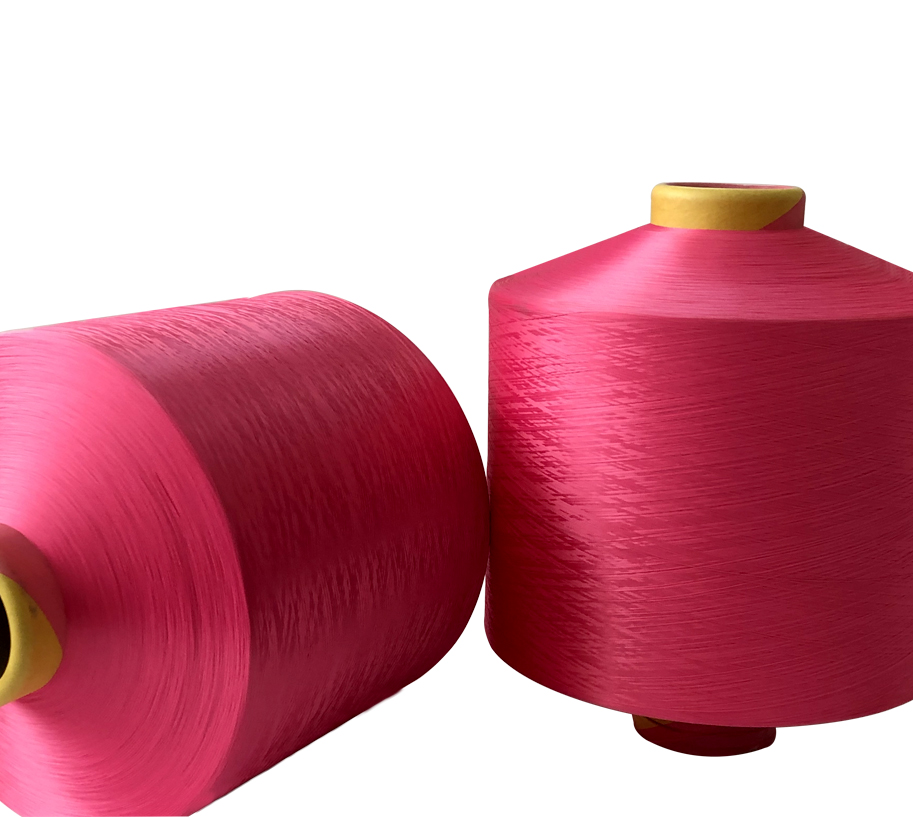Breathable Brown Black 300D/96F DTY Yarn High-Intermingled 99.99% Polyester Yarn...
See Details
In this article we'll explore what Polyester Yarn is and what it can be used for. We'll also discuss how to choose a polyester yarn for your project and what applications it can serve. Whether you're in the market for a new sweater or a new pair of socks, there's a polyester yarn that's right for you. Here are some of its popular uses:
Texturized polyester yarn
Textile manufacturers use textured yarns to make various kinds of fabrics. Textured polyester yarns are commonly used for clothing. Textured polyester yarns have different thicknesses and functions and can be used for all types of fabric applications. Textured yarns have various uses, from dress fabrics to sportswear and even for decorative fabrics. They are also made of different fibers, including polyester and cotton. Read on to find out more about the benefits of textured polyester yarn.
The manufacturing process for textured polyester yarns uses air-jet texturing of continuous filament yarns to produce bulky and crunodal surface loops. The present invention improves upon the process of producing bulky polyester textile yarns and reduces boil-off shrinkage to less than 3.5 percent. While the present invention was originally filed in 2007, the claims are applicable to all polyester textiles. To obtain a of three percent shrinkage, textured polyester yarns must be produced with less than 35% water absorption.
Fabrics made from polyester yarn
Polyester yarn is a popular fabric fiber. The process of making it involves combining long filaments into shorter ones called staples. These short filaments are woven together to form a yarn. Polyester yarn is usually made up of short, soft fibers, which give the fabric a smooth and supple texture. Polyester yarn is commonly blended with cotton or other fibers to make it more absorbent and durable. Polyamide is another popular fiber blend, which is more absorbent and soft than cotton.
Polyester was introduced in the United States in 1951, and became the fastest growing fiber in the country. Doubleknits made from polyester were widely popular in the late 1960s. Despite being a popular fiber, polyester suffered from an "image problem" in the 1960s, and its clothing was often criticized. After this, new forms of polyester were developed. One of the forms of polyester was microfiber, which is both more flexible and luxurious than traditional polyester. Microfiber is so soft that it's difficult to distinguish between polyester and silk fabrics.

Price of polyester yarn
The price of polyester yarn is rising steadily since the start of the year, with monthly fluctuations. In April 2016, the average unit value realization was US$2.04 per kg, rising to US$2.27 in April 2017 and US$2.49 in April 2018. The price of polyester yarn tracked the prices of polyester fibre in the domestic market and the overall trend in the global market. Demand for polyester yarn was sluggish, with no clear trend in recent months.
Prices rose in the second quarter of 2022, driven by firming raw material costs and increasing demand in the domestic market. The rise in raw material costs was partly due to Chinese trade restrictions and rising local demand, but also reflected a drop in the supply of Covid, a domestic rival. Nonetheless, domestic yarn spinners felt the pressure and passed the increased cost to end users, who buy polyester fabrics for a variety of applications, including consumer fabrics and home furnishings.
Applications of polyester yarn
Polyester is a versatile material used in the production of many products. Its qualities include low shrinkage, high tensile strength, and lustrous surface. It is inexpensive and light, which is a plus for the consumer. These properties make polyester an attractive material for textiles. Many products made from polyester yarn include apparel, home furnishings, and toys. Below are some of the common uses of polyester yarn. Listed below are just a few of these products.
Spun yarns - These fibers are spun after cutting PET into pieces. The process increases the tenacity of polyester fibers, making them more resilient and strong. They are also softer and can be twisted into a softer, supple fabric. Spun yarns are generally larger than 16 tex count and are used for weaving and knitting. PET multifilaments - Made by twisting polyester POY yarn, PET is a high-end polyester yarn used for insulation and soft textiles.